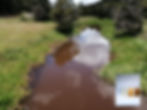Part 5 - Funding and Monitoring Nature-Based Solutions
- Jonathan Cousins
- Oct 14
- 4 min read
By Vision Consulting Engineers (VISION) • 14 Oct, 2025 • 4 min read

In This Article: - Why funding for NbS in New Zealand remains fragmented and where current opportunities exist. - How monitoring is the new “currency” for proving NbS performance and unlocking future investment. - Innovative tools and technologies that make local monitoring simpler and smarter. - How linking data to measurable outcomes strengthens business cases and investor confidence. - The importance of building community capacity and long-term stewardship.
Across Aotearoa, enthusiasm for nature-based solutions (NbS) is growing. Communities want to restore their rivers and land for future generations, councils seek practical ways to reduce flood management costs, and businesses from farmers to oyster growers depend on stable land and cleaner water. The list goes on.
What’s missing is now coordination and, more importantly, sustained funding.
While many small grants and pilot funds exist, there is no enduring national framework or long-term investment stream. Practitioners are calling for the same direction and scale seen overseas in programmes like Scotland’s Peatland ACTION or biodiversity-credit schemes that reward restoration at landscape scale.
The Taumārere Catchment NbS Feasibility project shows how local leadership can act now to prepare for national financing frameworks. Through high-resolution spatial planning, community engagement, and clear financial reasoning, it builds the foundation for prioritising investment when it arrives, strengthening local self-determination and trust in the process.
This blog will break down 5 main insights from the project.
1 - Funding: What Exists and What’s Missing
Funding for NbS in New Zealand remains fragmented. Over recent years, short-term initiatives such as the Ministry for the Environment's (MfE) NbS for Flood Mitigation studies and Jobs for Nature created valuable momentum, but both have since concluded.
Current Funding Sources
With no strategic national programme, councils, iwi, and community groups are piecing together smaller funds and philanthropic grants to keep projects moving. Current sources include:
Regional-council environmental or flood-management funds.
Grants, such as, WWF-NZ, Lotteries Environment & Heritage, Tindall Foundation, Rotary Club.
Private and corporate partnerships investing in biodiversity or carbon offsets in the Emissions Trading Scheme (ETS)
The Role of Business Cases
Carbon markets offer potential income, but the current ETS favours exotic forestry, with radiata pine earning credits within 25 to 30 years; roughly twice as fast as native regeneration. This limits incentives for indigenous restoration, unless viewed through an intergenerational lens.
Business cases, like that developed for the Kaipara Moana Remediation project in Northland, offer a pragmatic step forward. They help quantify both the cost of inaction, and the long-term social and economic returns of restoration investment, showing how lower flood losses and cleaner water can strengthen local industries and improve well-being.
2 - Monitoring: The New Currency for Investment
"In the funding landscape, credible monitoring is the strongest currency giving funders confidence that restoration and NbS actions are working; leading to reinvestment."
The Taumārere project applied SMART principles (Specific, Measurable, Achievable, Relevant, Time-bound) to create a Monitoring Framework to understand the baseline and track NbS success. It considers hydrology, water quality, biodiversity, and cultural indicators as key metrics to provide transparent evidence that support locally-led adaptive management and planning.
Typical Monitoring Tools
Stream health monitoring and assessment kits (SHMAK).
Fixed photo-points and drones to track vegetation health, erosion, sediment movement.
Simple sensors for water clarity (turbidity), level, temperature, pH, etc.
Community records and Māori Cultural Indicators (MCI) to capture lived experience, like restored abundance of kai (food).
GIS mapping allows spatial analysis and planning to inform monitoring locations.
3 - Innovation: Amplifying Local Knowledge with Technology
Innovation in NbS monitoring is often aimed at connection using smart, simple tools that link community observations with shared data and automation. Technologies don’t replace local knowledge, they amplify it!
Examples of Smart Tools
Low-cost data loggers sending real-time rainfall or flow data.
Satellite imagery to map landscape change or condition.
Dashboards that combine citizen-science, council, and cultural indicators into one visual story of catchment health.
4 - Outcomes: Linking Monitoring to Financial Value
Monitoring only has real weight when it connects actions and data to value, e.g. linking investment to an outcome. These metrics help councils, iwi, and funders quantify returns and justify scaling up ambitions. They also build investor confidence by showing that NbS actions are not one-off trials but measurable infrastructure solutions.
Connecting Actions to Value
Riparian planting to reduce erosion and sediment loading downstream.
Restored wetlands to lower peak flows and reduced damage costs or insurance claims.
Fencing to improve habitat and species recovery.
Improved public access to community use and awareness.
All the above actions contribute to cultural and community benefits, like returning taonga (treasure) species, improved harvest and well-being.

5 - Capacity: Building Long-Term Stewardship
Successful NbS projects grow local capability and stewardship as much as they restore land.
What's Needed for Success
Training for kaitiaki, schools, and community volunteers.
Shared equipment pools between councils and catchment groups.
Co-governance structures that embed data sovereignty and cultural integrity.
Open story-maps and dashboards to share progress publicly.
Capability of technical design teams for complex infrastructure aligned NbS projects, such as, engineers.
The following images are extracts from the Taumārere NbS project StoryMap created to tell the story of the catchment in a transparent way and offer the public the means to identify potential areas of risk and also possible solutions.
Aotearoa New Zealand has the people, science, and motivation for large-scale restoration and catchment management. What’s still forming is the national framework to match that ambition. Until then, catchments like Taumārere are showing what prioritised readiness can look like.
Explore the Complete Project:
This article is part of our five-part technical series on the Taumārere project. For a comprehensive overview, interactive maps, the full technical reports, and the project webinar, please visit our central case study hub.













